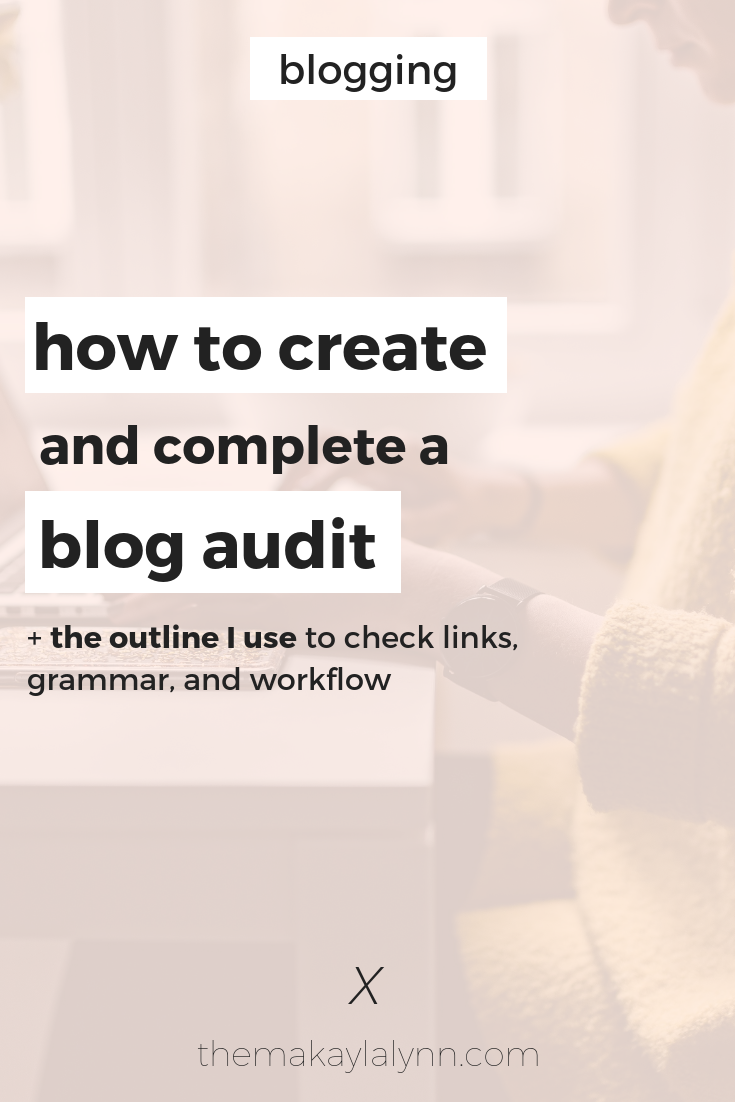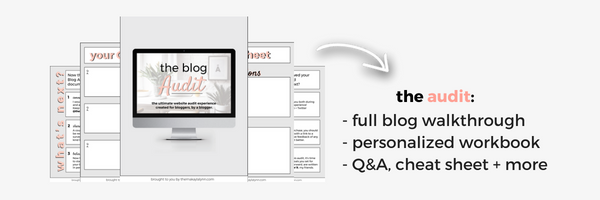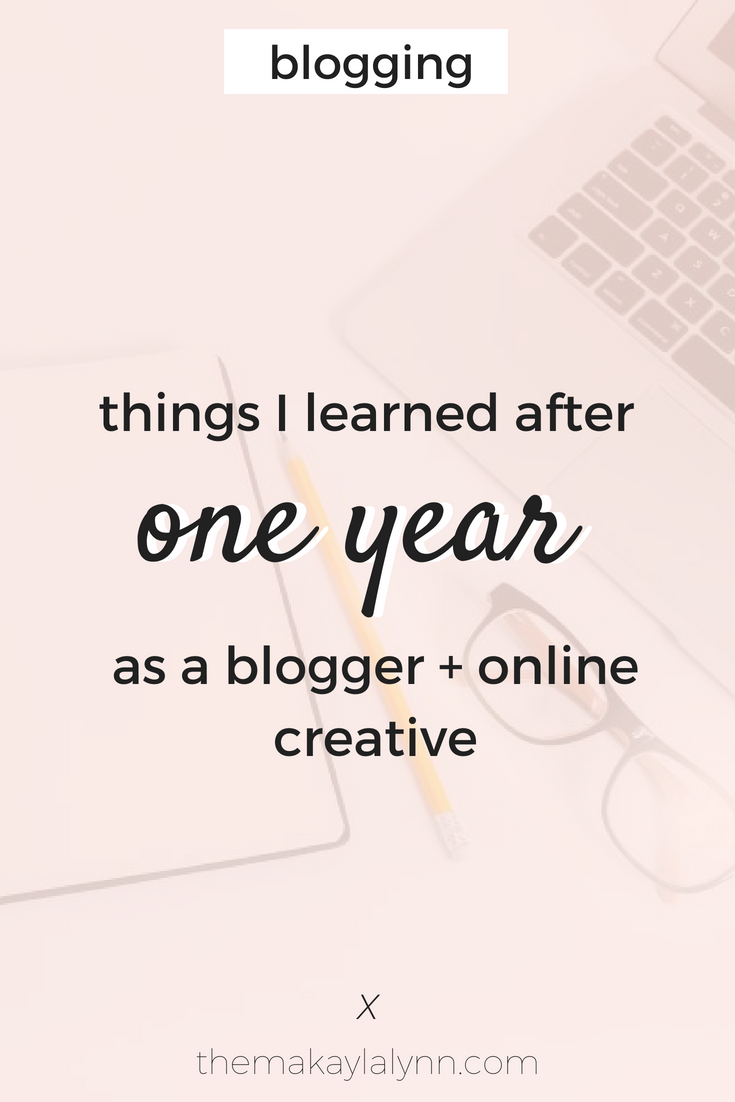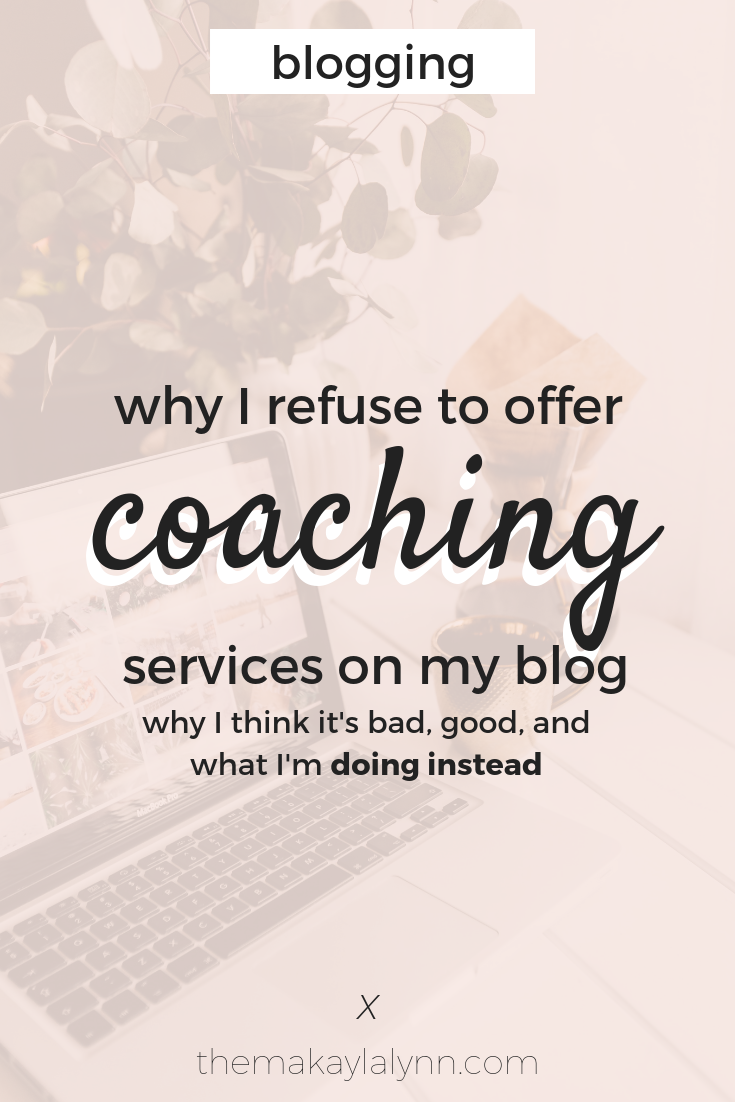How to Create and Complete Your Own Blog Audit
The moment I realized my blog meant more, to me, than a “hobby” was the day I decided to figure out what was wrong with it.
I remember noticing mistake after mistake with one simple walkthrough—disappointed that I had waited months before attempting to see my site with fresh eyes.
The one thing I hope you, fellow blogger, take from this post is how beneficial a blog audit can be for your future. Not only is it healthy to appreciate your growth in whatever community you’ve planted seeds, but an audit can save you both time and money moving forward.
So, how CAN you create and complete your own blog audit? Let’s get into it.
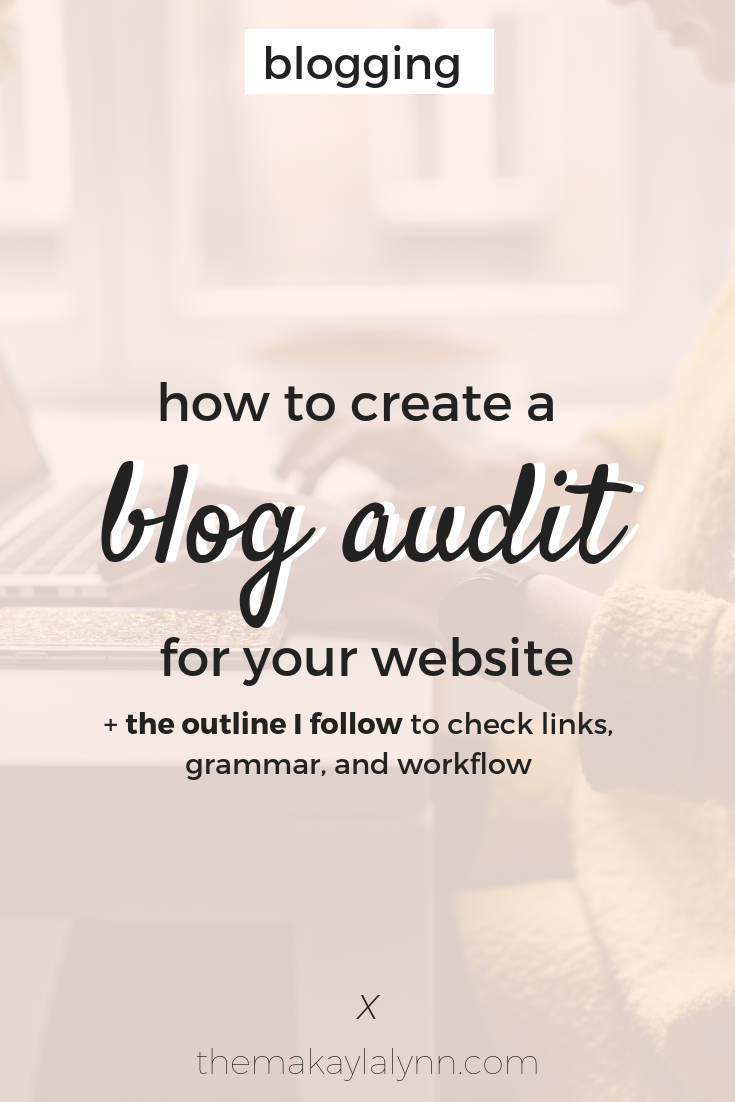
step one
First things first, I encourage you to write down or create a fresh word document to define each page that exists on your site.
Seeing your site visually, or written down, is the lightbulb many people need to notice helpful, detrimental, or necessary changes that can be made.
step two
Next, I always enjoy creating a roadmap defining what I hope my audience does once they visit my page. If this type of “journal entry” doesn’t suit your personal workflow, consider one of these questions before doing a detailed walkthrough:
- What steps do I hope new visitors take to explore my page?
- Where do I want my audience to go first?
- What content would benefit new visitors the most?
- What will be most interesting to see first and last on my site?
If you’re not used to asking these questions, I can see why they seem a bit misleading at first glance.
No, none of these questions are insinuating you should attempt to “misguide” your audience to content that doesn’t genuinely benefit them.
In all actuality, knowing how you want your audience to react and explore your page can help both parties in the long run. Not only are they experiencing your site as you intended them to, but your content can be properly seen—rather than hidden and, eventually, buried.
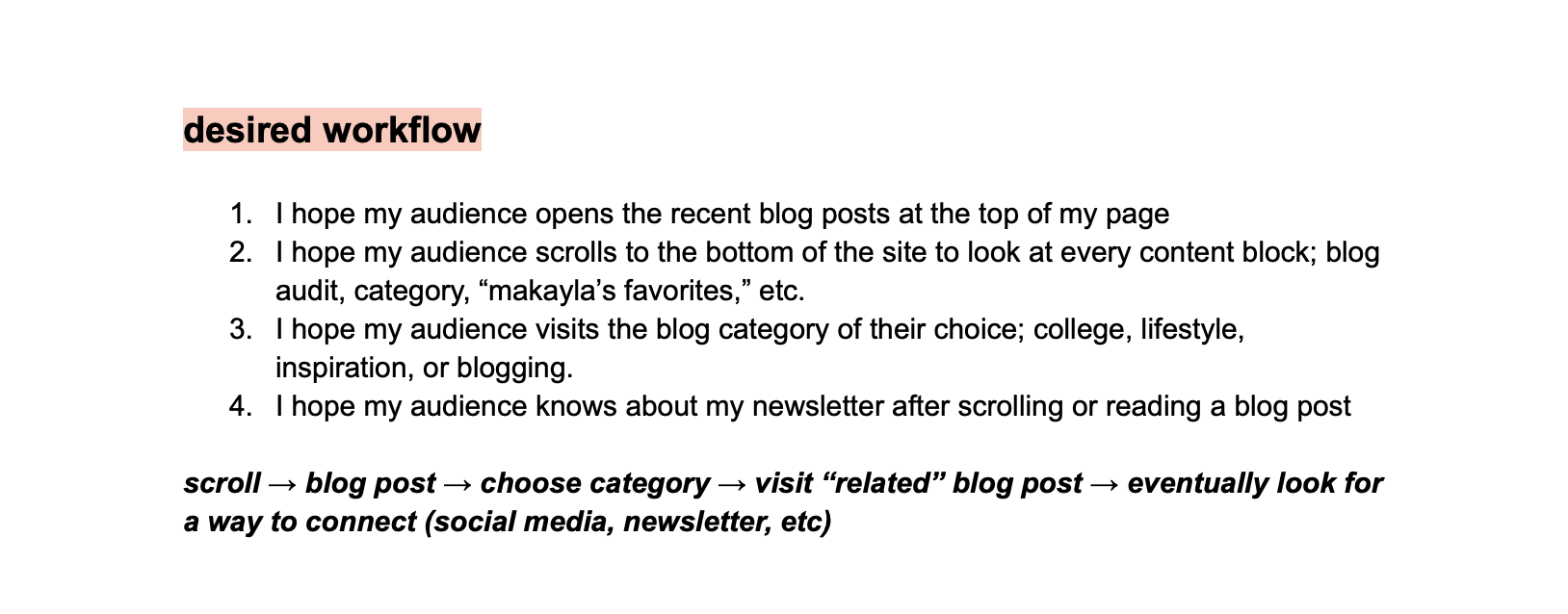
step three
It’s time to start physically or mentally outlining your audit because, no matter how you prefer to walk through your site, taking action is already a step in the right direction.
Whether or not you plan on writing each section down, or making quick mental notes, take this rough draft and make it your own (depending on what you offer).
Quick Tip: Keep in mind that each bullet point is meant to be checked, edited, or reconsidered. Although most pages may be in good standing, it never hurts to check social links, grammar, and test workflow during audits.
Links:
- social links
- primary + secondary menu(s)
- blog posts + subsequent images
Pages:
- pages + sub-pages
- about, contact, resources, shop, etc
- landing pages
- landing page workflow (product, signup form(s), etc)
Homepage:
- main images
- button(s)
- content blocks
- sidebar
- footer
- signup forms
Blog and/or Shop/Services:
- blog page layout (list or grid)
- content blocks
- products / services
- individual landing pages
- purchase workflow
- hidden pages (possible tripwire* or password-protected pages)
* Tripwire: If you’re unfamiliar with a tripwire page, this is a popup following a successful purchase where your audience has the chance to invest or explore another product you offer. This is something you’ve probably seen, if you visit other blogs, without noticing what was happening. They can also be pages your newsletter subscribers are sent to once they enter their information or hidden pages that buttons can lead to after videos.
step four
(Take a deep breath, my friends. It looks like a lot, but the outcome is always worth the work).
Nowadays, on the back end of this site, I’m constantly checking links and figuring out which workflow is broken. In other words, if that seems confusing, I’m always making sure links lead to where I want them, signup forms are successful, and images go to the right page or product.
Aside from that, I also complete this last step religiously. Depending on your friend group, community, or access to your audience—this can vary from easy to difficult.
I actually ask different eyes for a fresh perspective. (Go figure).
Now, give me a second...I'm completely aware of the fact that people who don't blog may not understand the minor technicalities of content creation. So, knowing how hard this last step can be, I created a solution that I wish I had found when I started out three years ago.
I created a full-blown Blog Audit.
With a 10-minute recorded walkthrough, Q&A document, and a cheat sheet or workbook, I set up each blogger with the tools they need to see their content from the outside looking in.
With this service, I hope you’re able to answer the pesky questions that are urgent but not worth the thousand dollar price tag many high-power business coaches offer.
Check it out here to learn more if you're interested!
That’s all for now, friends! Whether you’re revamping your blog or creating an entirely new corner of the internet, it’s time you felt comfortable with what you’re creating.
Knowing that nothing can reach “perfection,” it’s comforting to know that striving for perfection can get you pretty darn close to where you wish to be.
If you enjoyed this post, share it with your community and comment below your thoughts on “self-audits” of any kind!
As always,
Live (and improve) Intentionally,

